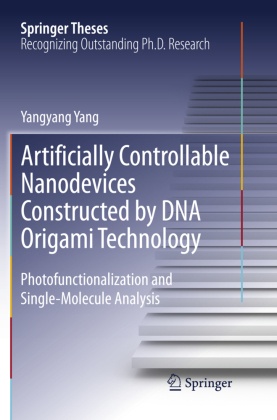
Artificially Controllable Nanodevices Constructed by DNA Origami Technology - Photofunctionalization and Single-Molecule Analysis
| Verlag | Springer |
| Auflage | 2018 |
| Seiten | 76 |
| Format | 15,6 x 0,6 x 23,6 cm |
| Previously published in hardcover | |
| Gewicht | 171 g |
| Artikeltyp | Englisches Buch |
| Reihe | Springer Theses |
| EAN | 9784431566908 |
| Bestell-Nr | 43156690JA |
In this book, the author deals mainly with two topics: (1) single-molecule visualization of switching behaviors in the DNA nanoframe system utilizing different kinds of molecular switches through the use of high-speed atomic force microscope (AFM); (2) construction of photocontrollable DNA nanostructures in programmed patterns and direct visualization of the dynamic assembling process. Here, high-speed AFM was employed to observe the dynamic movements of single molecules. Compared to a traditional single-molecule analysis method, such as fluorescence spectroscopy or electron microscopy, high-speed AFM makes possible the real-time observation of molecule behaviors. DNA nanostructures were designed and assembled as scaffolds to incorporate interested biomolecules. The observations were carried out under robust conditions without complicated pretreatment. Moreover, the photoresponsive molecules were successfully assembled into around 100 nm-sized DNA nanostructures. The assembly/disa ssembly of nanostructures can be regulated reversibly by photoirradiation. This book explains how DNA origami has gradually become a useful tool for the investigation of biochemical interactions in defined nanospace. It also shows the possibility of DNA nanostructures acting as nanodevices for application in biological systems, serving as a good introduction to basic DNA nanotechnology.
Inhaltsverzeichnis:
Introduction.- Direct observation of single hybridization and dissociation of photoresponsive oligonucleotides in the designed DNA nanostructure.- Direct observation of logic-gated dual-switching behaviors inducing the state transition in a DNA nanostructure.- Multi-directionally photo-controllable DNA nanostructure assembling reversibly in programmed patterns.- Arrangement of gold nanoparticles onto a slit-type DNA nanostructure in various patterns.
